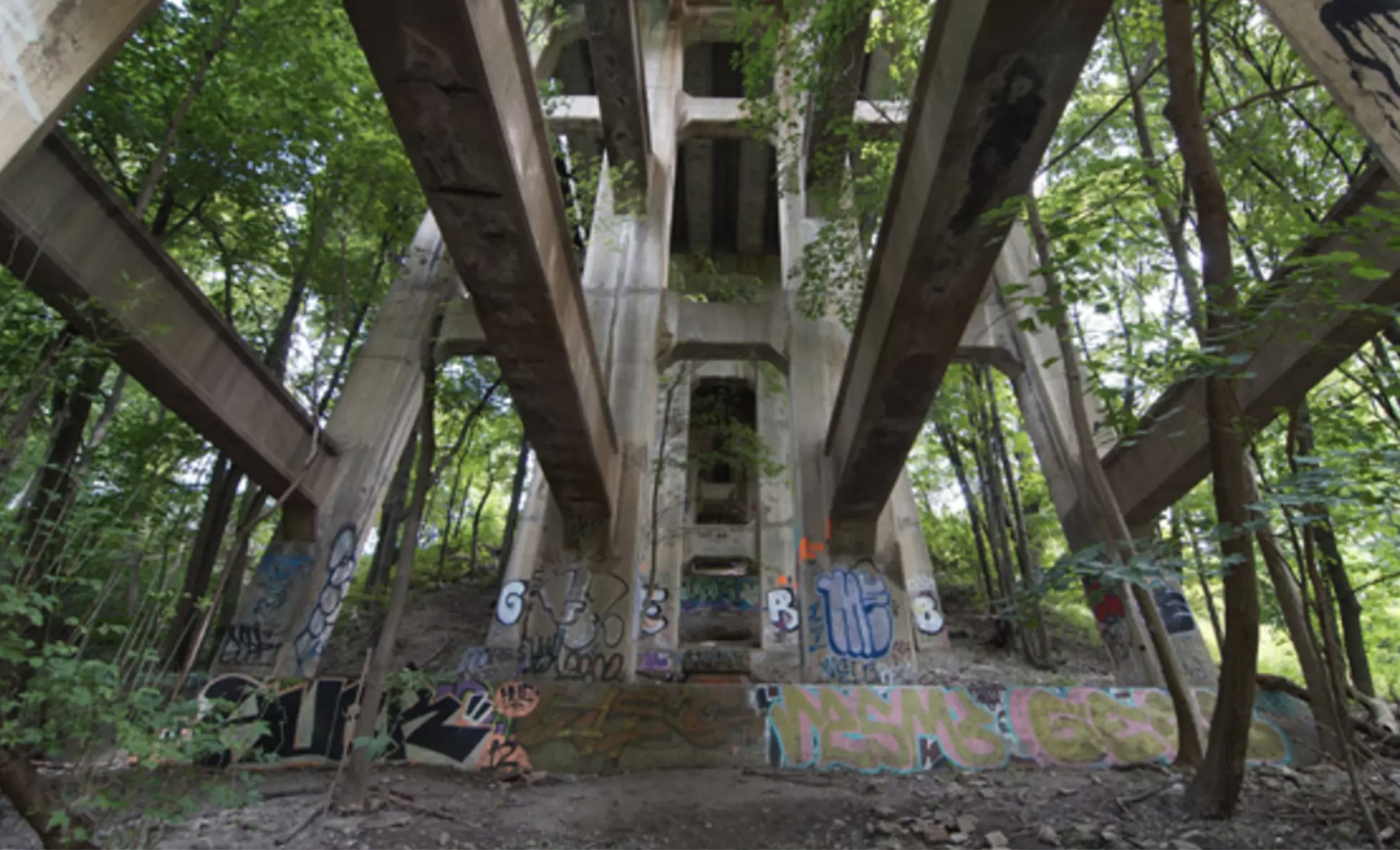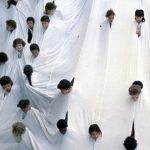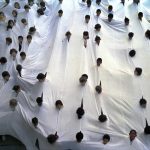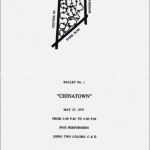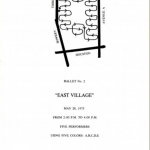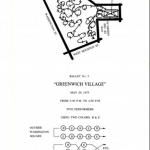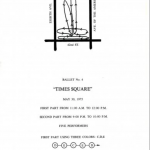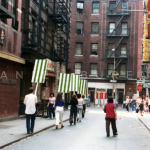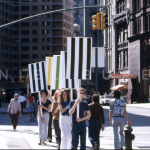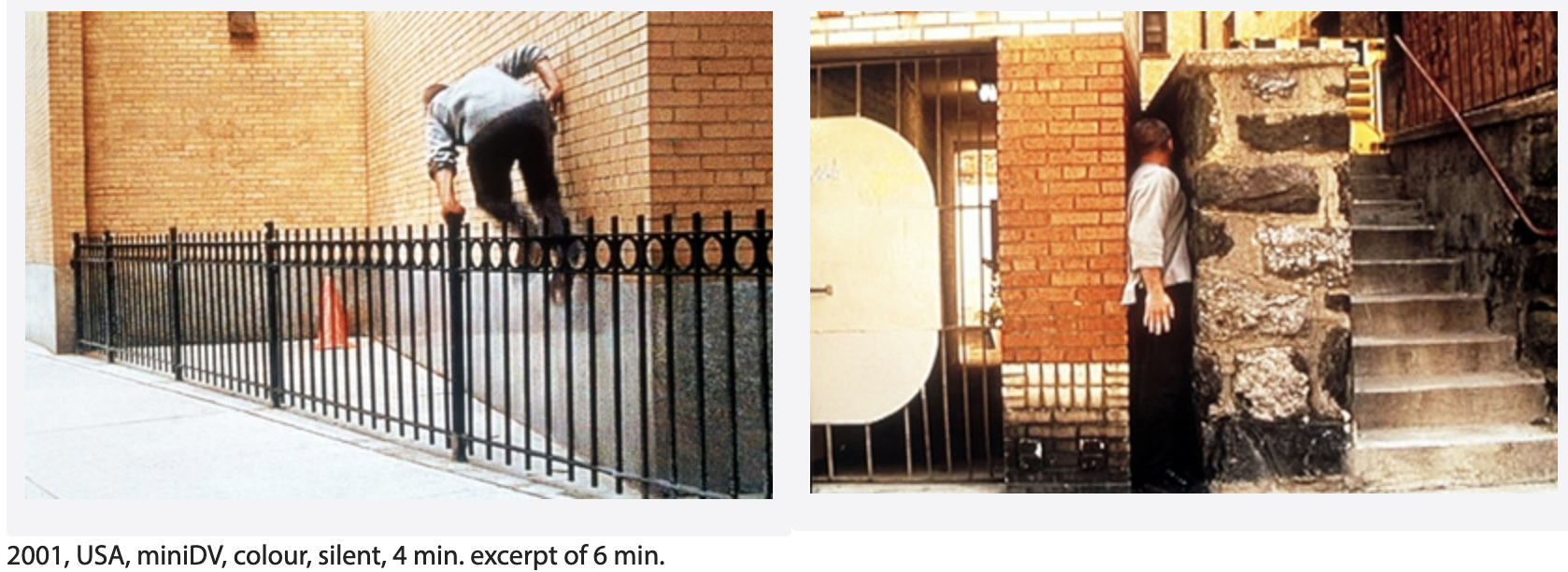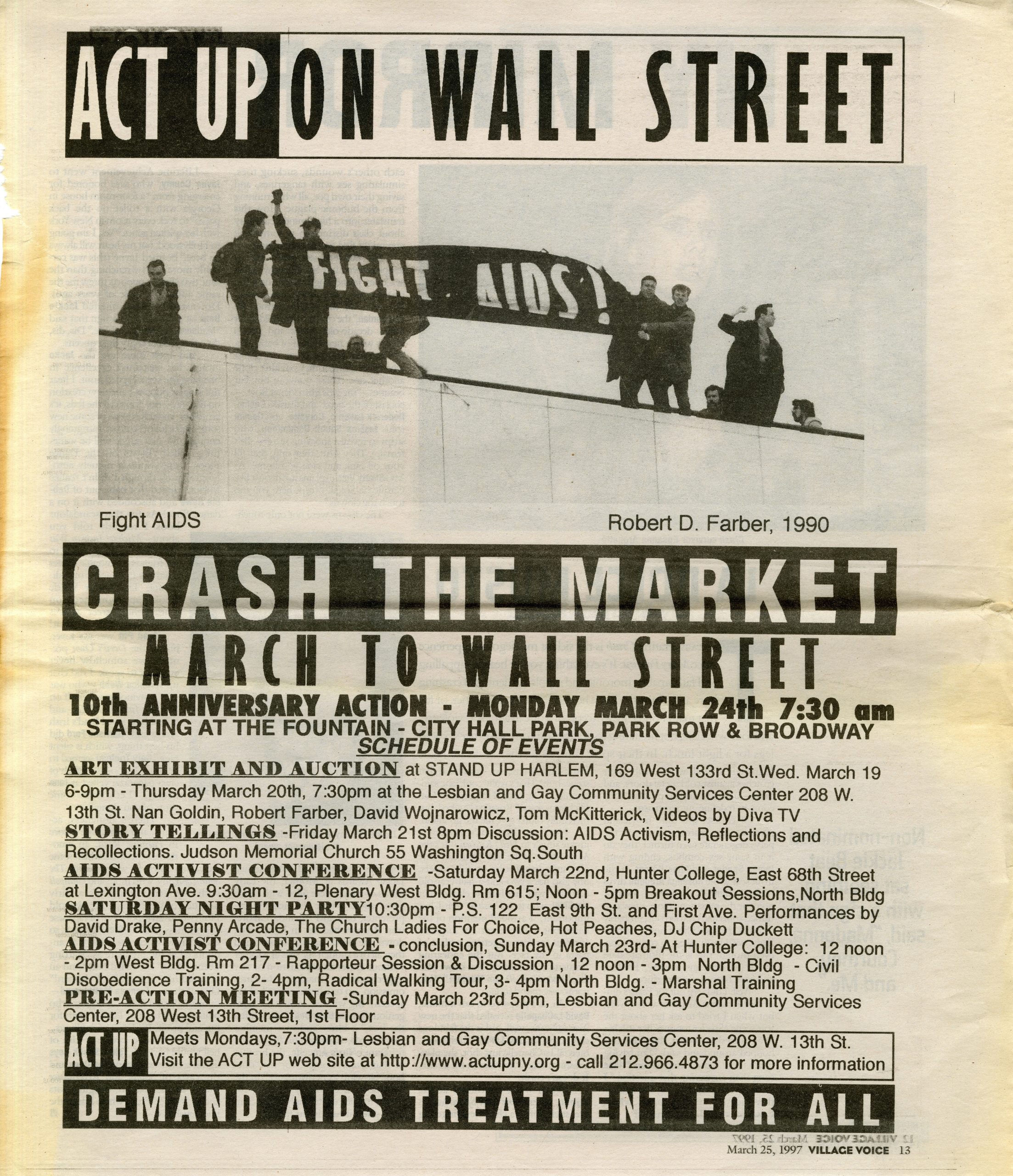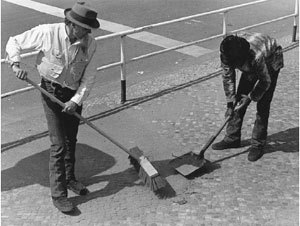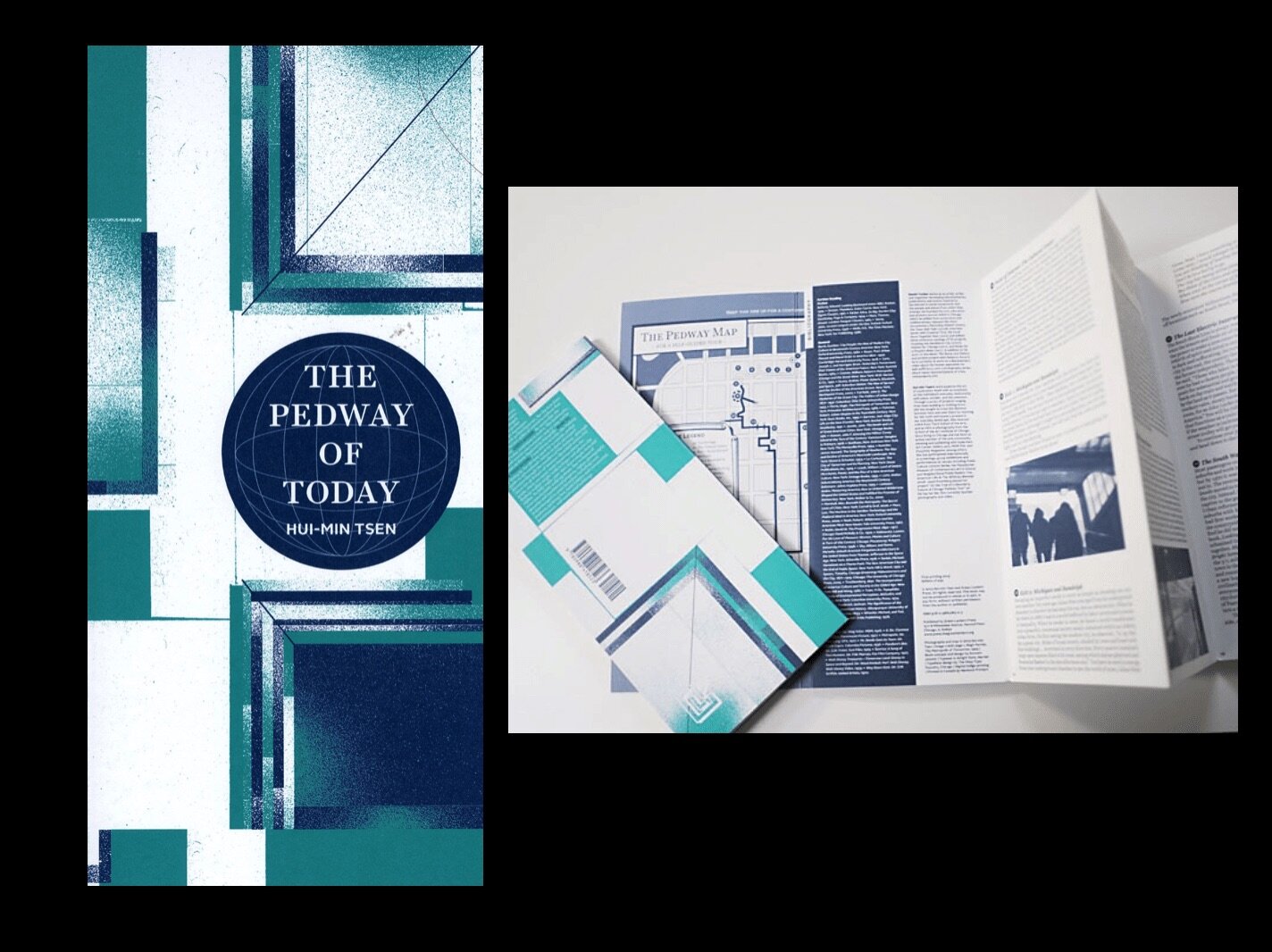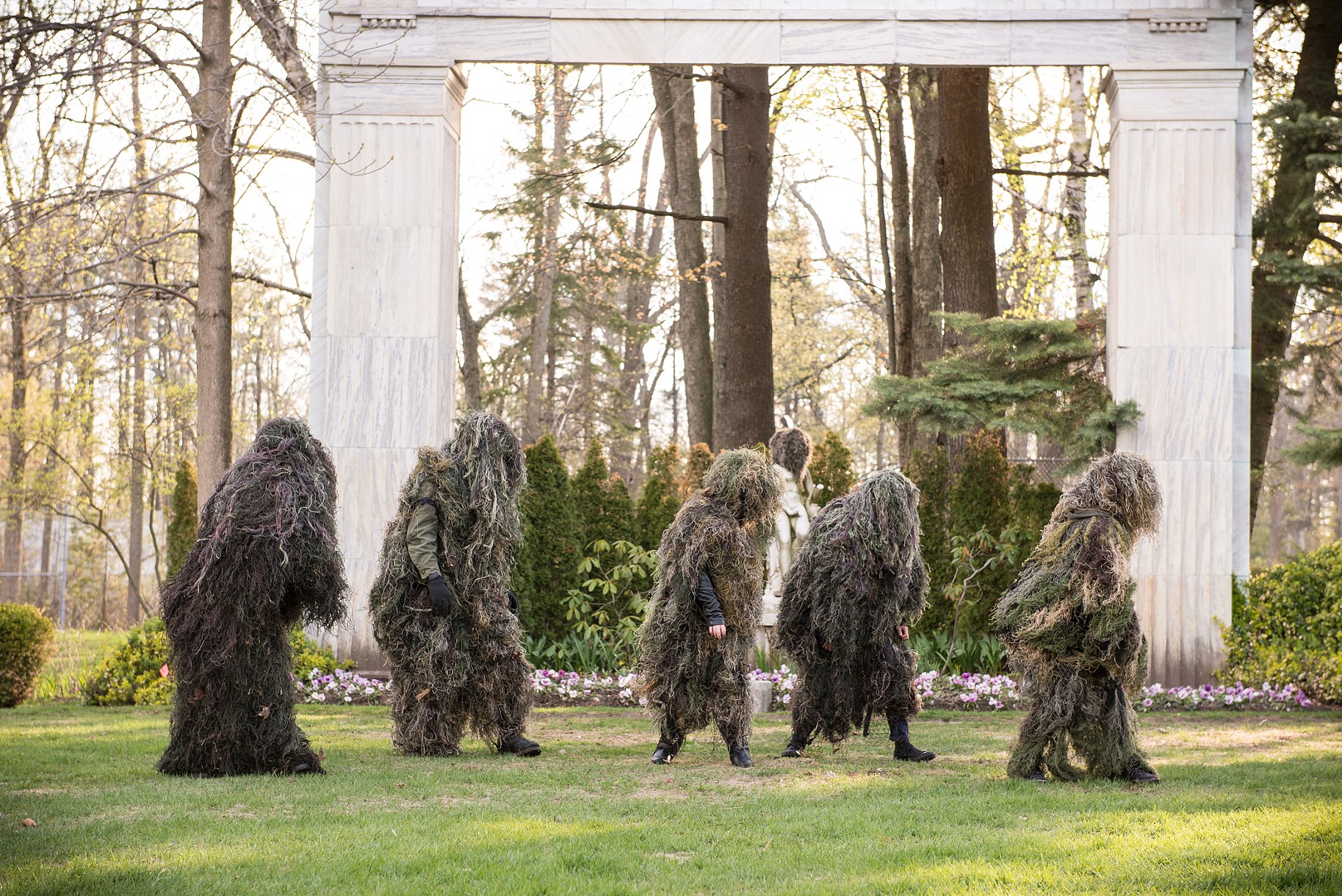
(credit)
“The ghillie suit is traditionally used by military snipers and hunters to camouflage the human body, allowing the wearer to blend into various natural landscapes. Sight Unseen: An Un-camouflaging at Guildwood was part of a series that repositioned the ghillie suit in the open air of suburban space and areas slated for development.
For Restless Precinct, I created a series of “un-camouflagings” in Guildwood Park in partnership with the Community Arts Guild Youth Theatre Troupe, an offshoot of Jumblies Theatre. The project evolved over six weeks, exploring concepts of visibility and belonging through our relationship and engagements with nature and each other. Participants learned how to create their ghillie suits, and together we developed movements in response to the site. Guildwood Park (now Guild Park and Gardens) contains over seventy architectural fragments and edifices. The research revealed that the park was once the location of Bytown II, a military training base for radio operators in the Women’s Royal Canadian Naval Service during World War II. A custom camouflage headpiece was created for a sculpture entitled Musidora (artist unknown) and installed for the duration of the exhibition. This work was a gesture toward acknowledging the invisibility of bodies, histories and contributions at Guildwood Park, including a site specific work created by Ana Mendieta. The culminating performance took place as part of Restless Precinct’s opening events.”
Guildwood is a sculptural sanctuary park in Toronto and has beautiful gardens.
